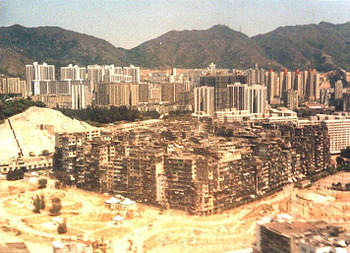JF Ptak Science Books LLC Post #116
Philip Johnson, the enormously influential, selfish and neo-fascist architect once remarked of his profession that “architecture was too important to be left to the architects”, and I agree, especially if it was Johnson who was signing off as architect. Johnson was more interested In building great rooms; some people see Johnson’s greatest room as the Crystal Cathedral that he designed for the television minister Robert Shuller (Garden Grove, California), a very shiny one-acre metal/mirror tent-like structure that from the inside looks like, well, a tent; from the outside it looks pointy and block-like. (I’ve never understood the fascination with the work of Johnson.) 
But some of the ideas of Johnson’s that I’ve least understood are his big ones—city design and planning, the oddest of which (pictured here) is the design for Third City (1966). This essentially was a city re-design, constructing something else over/within the existing street grid and transportation systems, and adding a surrounding layer of “low” and middle-income housing, and which included at its nexus a giant skyscraper. Aside from a decidedly cellular appearance, this work by Johnson also reminds me of classic medieval walled cities, though not those with crenulated fortifications, like Basel, but rather more like the truly ancient cities like the Sumer Uruk, or Lahore, or Starard Szczecinski. In Johnson’s design the defensive perimeter is a chain-like linkage of apartment blocks filled with families of modest means, and the thing really most reminds me of the infamously spectacular walled city of Kowloon (Hong Kong), a high-rise slum that was formed of concentric blocks of itself.
Johnson’s stylistic references have almost always felt “mean”, to me, and Third City is no exception.



Comments